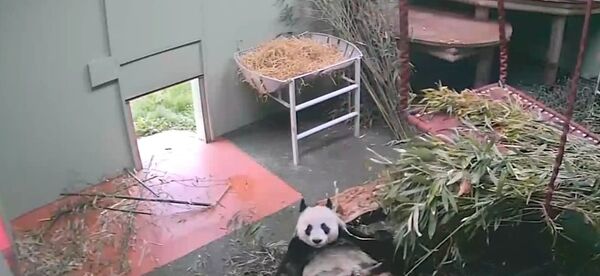Scientists at China's Institute of Zoology found that giant pandas are able to survive on a diet of bamboo by only expending 38 percent of the energy typical for animals of their size.
According to their findings, published in the journal Science, giant pandas are only slightly more active than three-toed sloths, which use 36 percent of the energy typical for animals of their size. All this sitting around doesn't take much energy, giant pandas only expend around 1,100 calories per day.
"Unlike most other herbivorous species, however, their digestive tract has not evolved the long twists and turns that facilitate the slower digestion necessary for cellulose-rich plants," the release said.
"Pandas achieve this exceptionally low expenditure in part by reduced sizes of several vital organs and low physical activity," the paper said.
The scientists also found that the pandas studied in captivity moved only around a third of the time while pandas in the wild moved around half the time. The scientists also measured the average speed of pandas when they moved, found to be around 0.0269 kilometers per hour.




